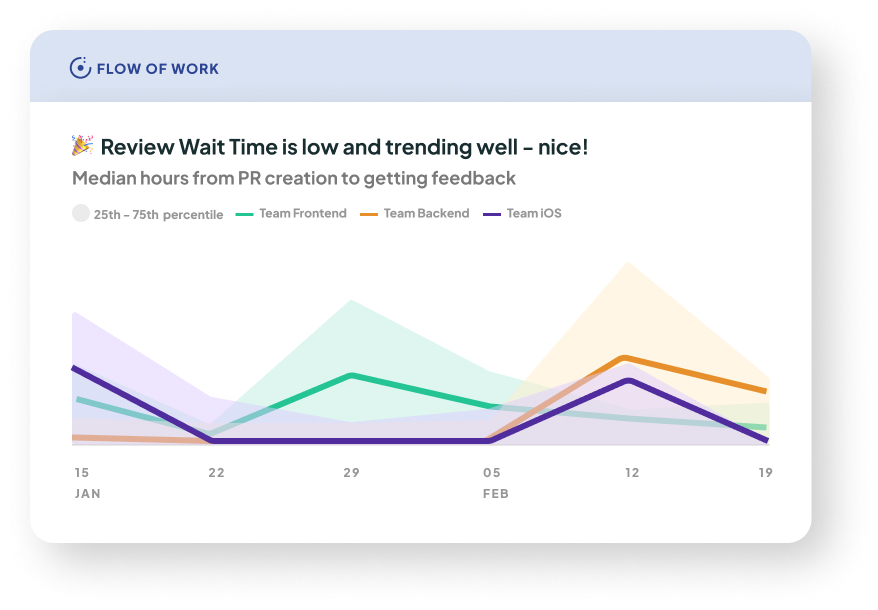Review Wait Time

What it is: This shows how long people wait to get feedback on their PRs.
Why it matters: This is one possible bottleneck for Change Lead Time. When people have to wait longer for feedback, it can mess up their workflow. They’re more likely to start a new piece of work while waiting for feedback. When they get that feedback, they have to context-switch, making it harder for them to remember what they did. This often results in longer times taken for each of the tasks to be completed (for example, one study showed that it takes 10-15 minutes to get back into context).
Moreover, there’s bias in how long different groups of people have to wait for feedback. For example, this research showed that women had to wait longer than men for feedback. This is why we do show this metric at the individual level — so that you can make sure that everyone is receiving feedback in a timely manner.
How we calculate it: We measure the number of hours from PR creation until the PR gets feedback. This could be a comment, review, or merge by someone other than the PR author. It excludes time that the PR spends in a draft state, since the draft state indicates that the PR author is still finishing the work. To be clear on some nuances:
Review Wait Timeisnullif the PR has no feedback. It ignores responses from bots and responses that came in after the merge (since we exclude selfie merges).See here for some additional calculation notes that apply from
Change Lead Time.
What good looks like
We recommend that Review Wait Time be under 4 hours. This threshold is based on an internal analysis conducted by Multitudes across 80,000 PRs from a diverse range of customers and comparing against the SPACE and DORA research.
Last updated
Was this helpful?

